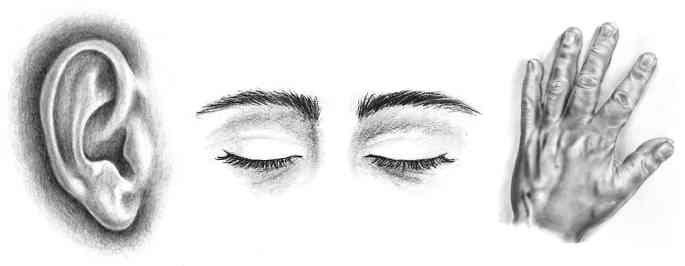The SSILD Technique:
Senses Initiated Lucid Dream

The Senses Initiated Lucid Dream (SSILD) technique involves focusing on your three main senses (sight, sound, and touch) as you fall asleep to help promote the induction of a lucid dream.
The technique originated in a post on the lucid dreaming forum LD4all from forum member cosmic.iron. In it, he describes that this method is a variation on a combination of other techniques including Wake Back To Bed (WBTB) and the Mnemonic Induction of Lucid Dreams (MILD). SSILD was designed as a foolproof method for beginners since it does not require as much finesse as other techniques. Here is my version:
SSILD Steps
The basic idea is to concentrate on three of your senses, one at a time, as you fall asleep. Focusing on your senses will heighten your awareness, which can lead to more lucid dreams.
- Attempt during a REM cycle only. Do NOT attempt at your bedtime, as it will not work. REM cycles occur roughly every 90 minutes during your sleep cycle. The best times to attempt are after 4.5, 6, or 7.5 hours of sleep. You can also try during a morning/early afternoon nap.
- Lay down in a comfortable position, close your eyes, and relax.
- Start by focusing on sight. Even though your eyes are closed, you may still experience subtle lights or colors. Even if it’s just pure blackness, focus on that. Do this for 10-30 secs but don’t count or think about the time.
- Now, shift your attention to what you hear. Listen to the sound of your breath, the hum of the furnace, the calming winds outside, etc. I like to notice the ringing in my ears. Do this for 10-30 seconds.
- Next, move your attention to your sense of touch. What sensations do you feel? Notice how your body feels on the bed: the gentle touch of the blanket on top of you, the softness of the pillow touching the back of your head, the rising and falling of your chest as you breathe.
- Repeat steps 3-5 again. Do this cycle about 5 times. You may find yourself beginning to lose focus at times. This is perfectly normal, simply resume the practice. It’s a good sign if you are about to drift off when your 5 cycles are complete, but it’s best if you actually fall asleep before that happens.
Entering A Lucid Dream
The unique part about SSILD is the variety of ways that you can have a lucid dream as a result of practicing the technique. Here are 5 ways through which you can enter a lucid dream from SSILD:
- Hypnagogia. If you are close enough to sleep and are still conscious, you might experience hypnagogic imagery, strange sounds, and sensations in your body. Simply observe and let it guide you further.
- Vibrations. You might experience strong vibrations that feel as though an electrical surge is pulsing through your veins. This is normal and doesn’t hurt. Relax and follow this sensation into the dream.
- Sleep paralysis. Maintaining focus on your senses as you drift to sleep can lead to a state of Mind Awake/Body Asleep. Often you will experience full body paralysis and can use this to enter into a Wake Induced Lucid Dream (WILD).
- False Awakening. Be aware that sometimes you will lose focus and the next thing you know you are awake again. Or are you!? Many times you actually are dreaming…this is called a false awakening. Perform a reality check to make sure.
- Dream Induced Lucid Dream (DILD). It’s quite possible that you will enter a dream but not realize it right away. Suddenly you remember that the last thing you were doing was this exercise. You now know that you’re dreaming.
Conclusion
If you struggle with dream incubation or any visualization methods, it might be beneficial to try this technique for a week or two. Some people enjoy the meditative aspect of SSILD and have many lucid dreams from it. It’s a great way to experience different states of consciousness. In the very least, it’s a great way to help you relax!
Home › Lucid Dream Techniques › Senses Initiated Lucid Dream
Comments